In this post, you will find solutions to the critical business issues that most CEOs and business owners face now: losing key employees, filling skill gaps, finding the right talent, ensuring future-proof skills, upskilling and reskilling. See how Artificial Intelligence resolves it all if implemented timely in your eLearning process.
How can your business benefit from implementing AI in L&D and HR processes? Our team with 15+ years of expertise in custom eLearning development will analyze your business needs and recommend the best solution. Talk with an expert for an insight!
The number one threat for CEOs is the “talent risk” or the difficulty to find and keep the right talent and skillsets. Nearly 90% of executives and managers say their companies either already face skill gaps or expect them within the next five years. The most common tactic for addressing skill gaps is upskilling and reskilling for internal mobility (cited by 56% of respondents), and, of course, external hiring. However, almost 70% of HR professionals are still not satisfied with their organization’s ability to meet their internal mobility goals. At the same time, top-performing companies such as IBM, Hilton, Unilever, and others already have adopted Artificial Intelligence tools to successfully manage this challenge.
AI-enabled Software to Solve Talent Management Challenges
Attracting and retaining enough employees at all levels to meet the needs of a company's growth, developing a robust leadership pipeline, and transferring key knowledge are among the top talent management challenges.
AI helps to raise to a new level the hiring, upskilling, and reskilling processes.
AI-powered talent management software is often based on three key components:
- AI-based tool for workforce skills assessment. Managers use it for a clear understanding of the skills and capabilities of their workforces to be transparent with employees about the skills that are needed, especially when the workers don’t possess them.
- AI-driven career path with integrated LMS/LXP for upskilling & reskilling. The tool identifies the skill set a person needs to excel in their role and their skill gap, then connects the person with training content from LMS or LXP that corresponds to that gap.
- AI-powered workforce forecasting tool. It can accurately forecast talent gaps which your company may face in near future. It benchmarks your employees' skills set with competitors to align with industry trends. AI provides recommendations for internal mobility or redeployment strategies.
1. AI-based tool for workforce skills assessment
AI provides HR managers with a greater understanding of an employee's skill set than they would get by assessing the feedback from manager surveys.
Using machine learning algorithms, talent management software automatically grades and ranks the job-ready skills of every employee based on their profiles and competency matrix. Before the implementation of this approach, skills need to be described only once by humans. And then these descriptions will be parsed by a machine.
Thanks to the implementation of AI, a manager will end up with a list of candidates with their ranked level for the skills the company needs.
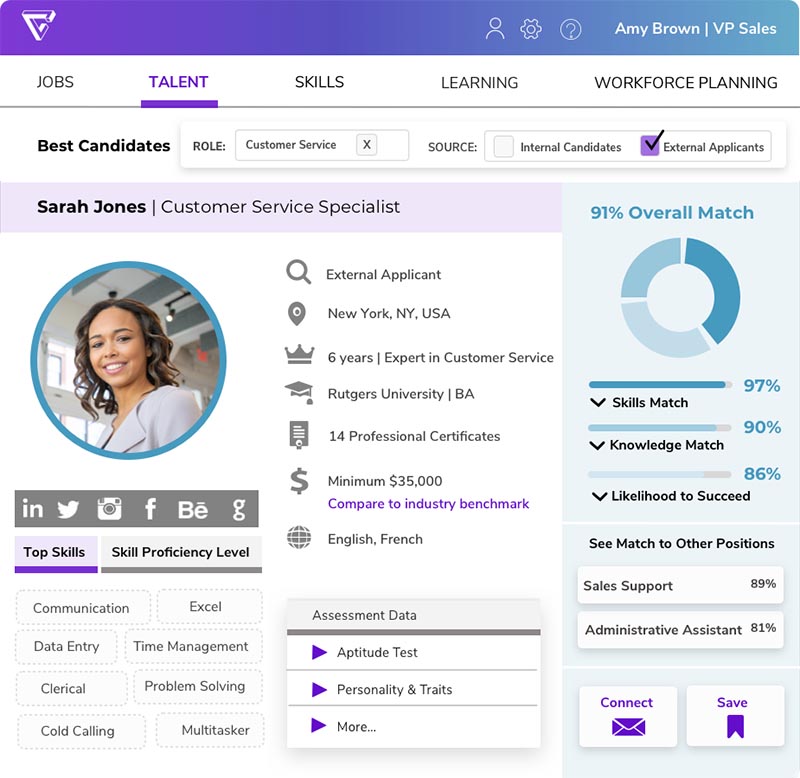 retrain.ai
retrain.ai
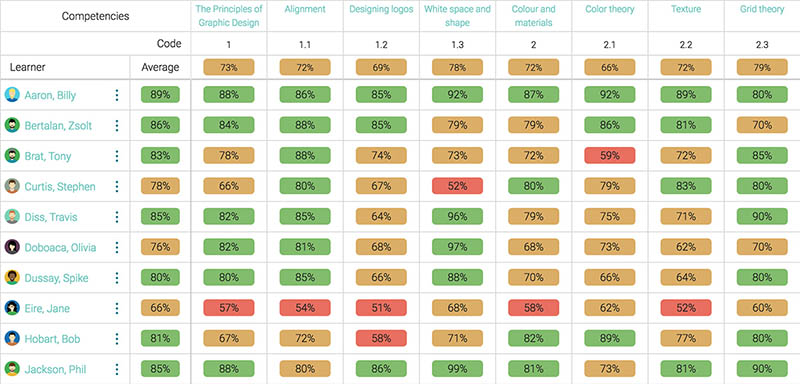 matrix lms
matrix lms
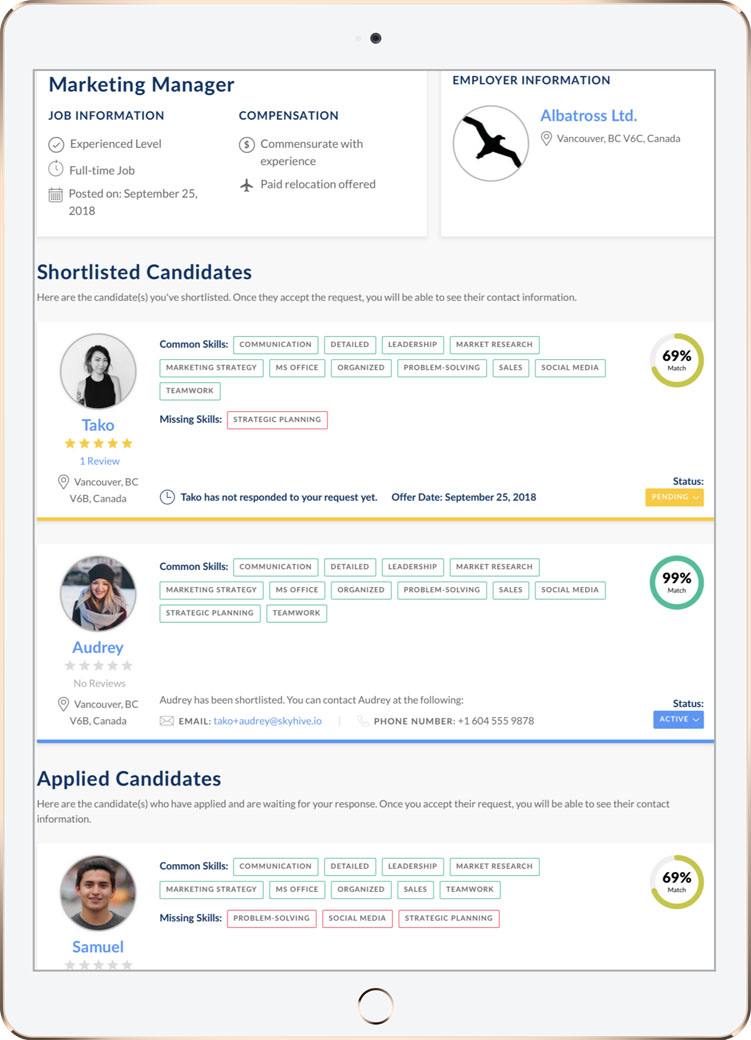 skyhive.io
skyhive.io
2. AI-driven career path with integrated LMS/LXP for upskilling & reskilling
AI-powered talent management software integrated with eLearning software such as LXP or LMS is designed to fill skill gaps by reskilling individuals from within the organization (or even outside) to meet the demands of digital transformation and to keep pace with future skill needs.
An employee, when looking for new opportunities, uses the tool for a clear understanding of the open positions within their organization and the required skills for each position.
AI algorithms analyze an employee's existing skillset, match them against the job requirements, highlight the missing skills, and recommend the appropriate courses to acquire these skills.
This approach leads to more effective training because it is based on a high motivation from the outset and supported by a more personalized learning experience.
By implementing Artificial Intelligence in education of employees, internal career growth opportunities enable businesses to more effectively retain top talents.
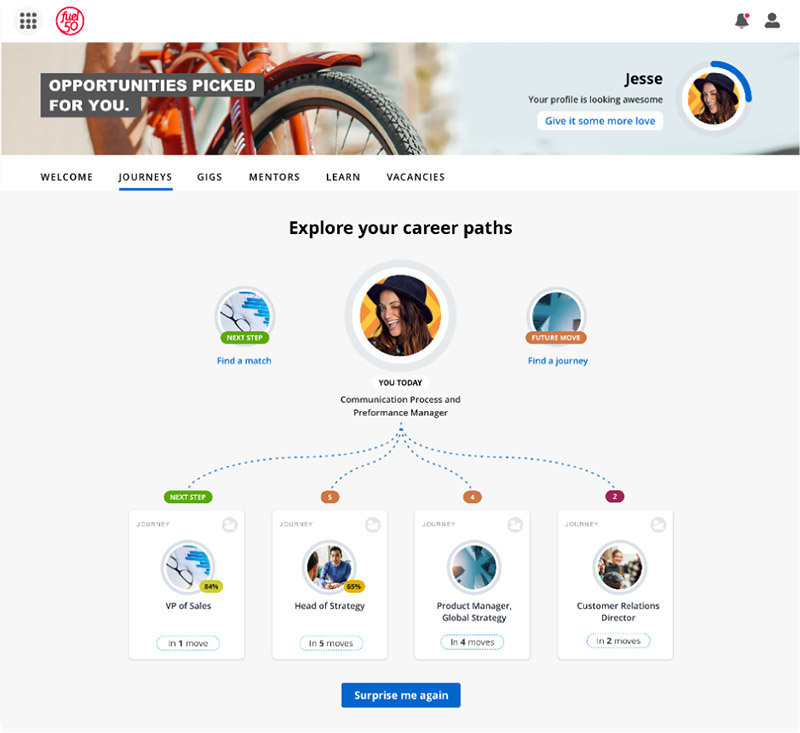 fuel50.com
fuel50.com
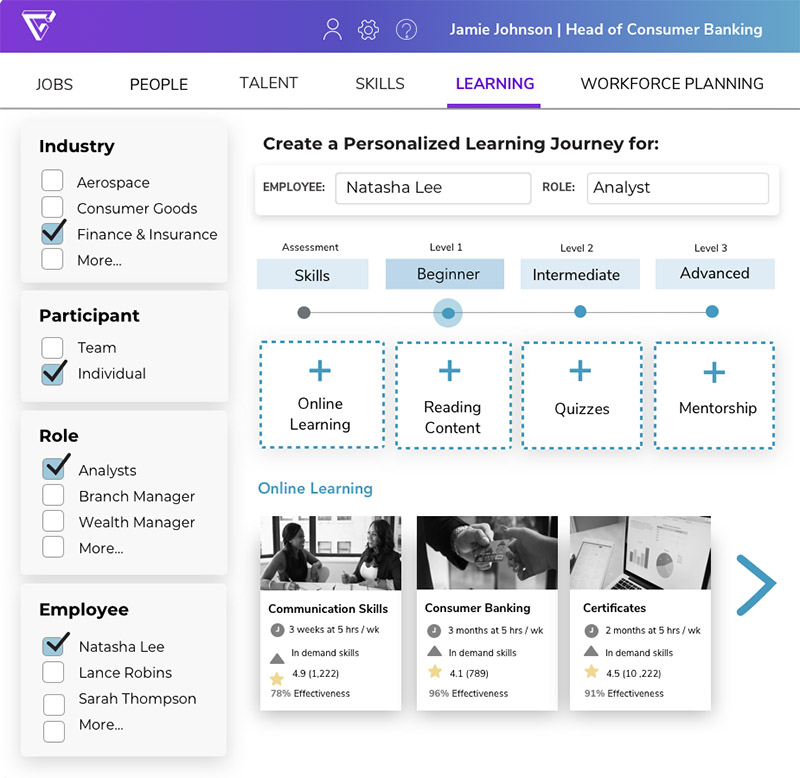 retrain.ai
retrain.ai
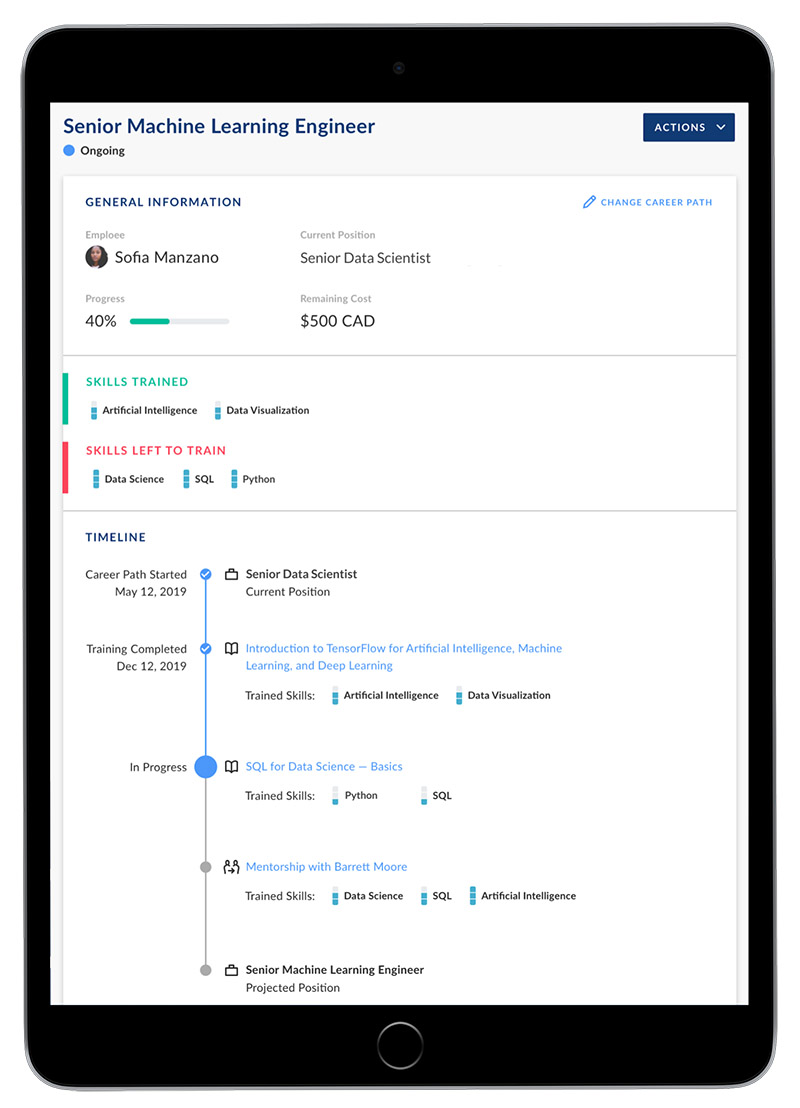 skyhive.io
skyhive.io
3. AI-powered workforce forecasting tool
AI-driven workforce and skills forecasting software performs human capital analysis and compares results with the real-time industry average.
It predicts emerging jobs and evolving skills that companies need to invest into their future-ready teams.
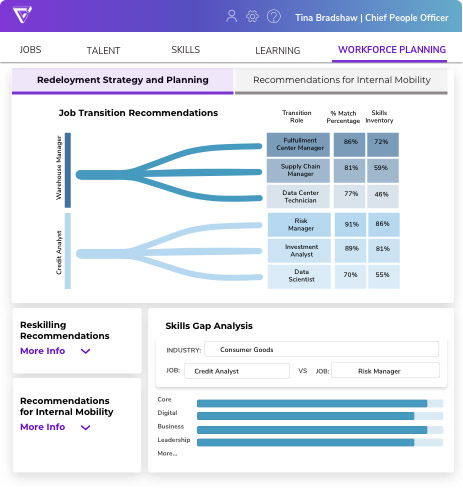
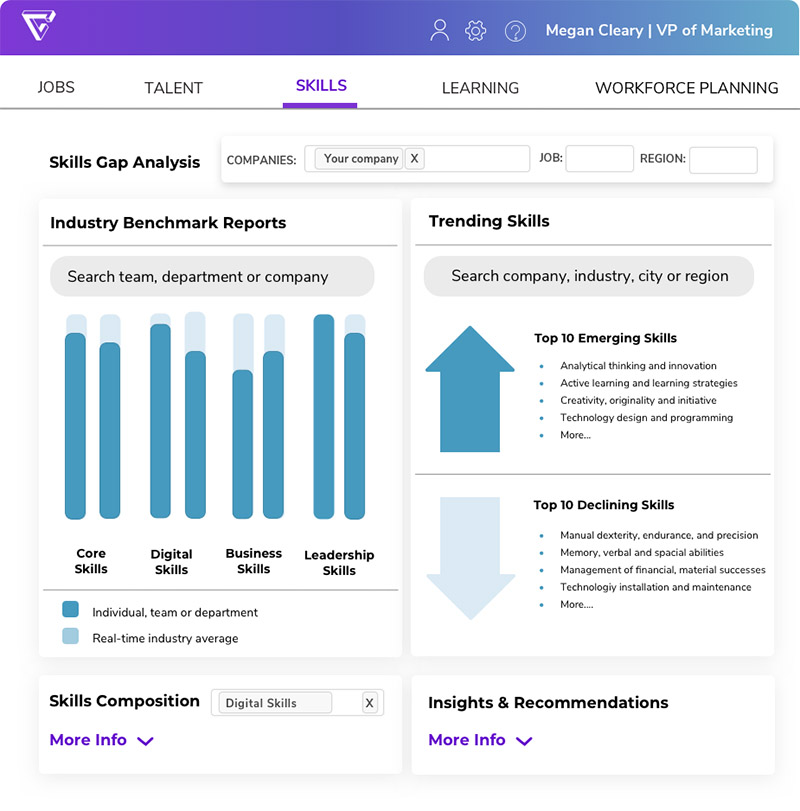 retrain.ai
retrain.ai
How to implement AI in your HR and L&D processes?
Companies that are aiming at the more effective strategy to address skill gaps may consider taking these actions:
- Start with creating a competency matrix and perform employees’ current skill set analysis. Understanding which skills to develop in the workforce requires comparing the supply of each skill with the business’s strategic goals.
- Integrate your HR software with eLearning software using the Talent Management framework. Organizations will likely need to join homegrown learning resources with eLearning content from multiple providers (online platforms, universities, and eLearning content providers).
- Get expert HR/eLearning software integration consulting. They gather business requirements for digital transformation, perform an audit of the current level of workflow automation, help you make the right software decision, and perform implementation using AI where it offers better value for money).
Rate this article
Recommended posts
Portfolio
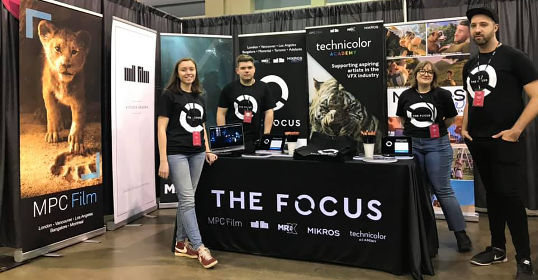

Our Clients' Feedback






















.png)
.jpg)
.jpg)
.jpg)
![Artificial Intelligence in Education [Ultimate Knowledge Hub]](/uploads/images/blog/posts/previews/image_163177848252-image(600x250-crop).jpg)

















Belitsoft has been the driving force behind several of our software development projects within the last few years. This company demonstrates high professionalism in their work approach. They have continuously proved to be ready to go the extra mile. We are very happy with Belitsoft, and in a position to strongly recommend them for software development and support as a most reliable and fully transparent partner focused on long term business relationships.
Global Head of Commercial Development L&D at Technicolor